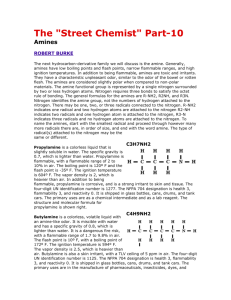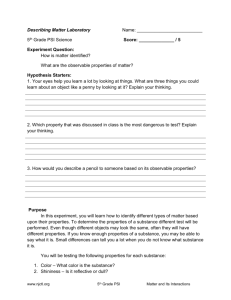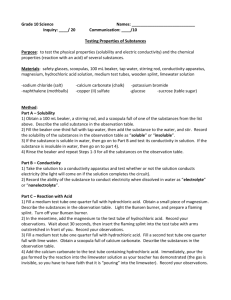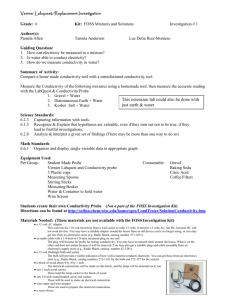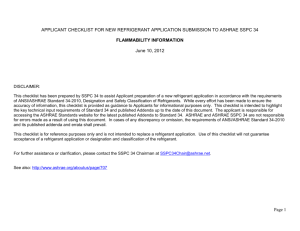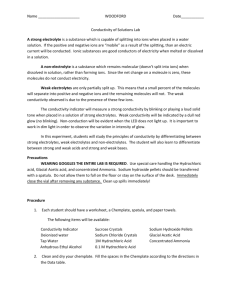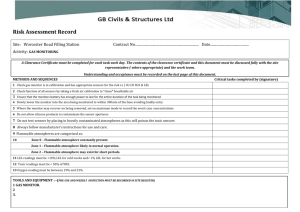Properties of matter experiment
advertisement
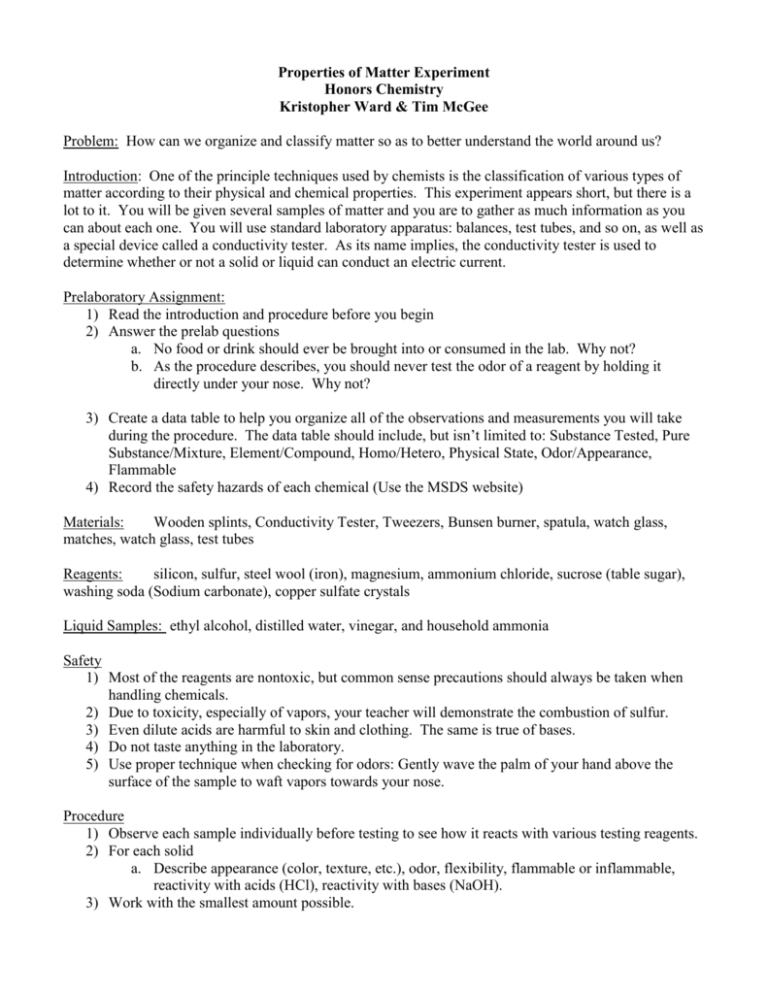
Properties of Matter Experiment Honors Chemistry Kristopher Ward & Tim McGee Problem: How can we organize and classify matter so as to better understand the world around us? Introduction: One of the principle techniques used by chemists is the classification of various types of matter according to their physical and chemical properties. This experiment appears short, but there is a lot to it. You will be given several samples of matter and you are to gather as much information as you can about each one. You will use standard laboratory apparatus: balances, test tubes, and so on, as well as a special device called a conductivity tester. As its name implies, the conductivity tester is used to determine whether or not a solid or liquid can conduct an electric current. Prelaboratory Assignment: 1) Read the introduction and procedure before you begin 2) Answer the prelab questions a. No food or drink should ever be brought into or consumed in the lab. Why not? b. As the procedure describes, you should never test the odor of a reagent by holding it directly under your nose. Why not? 3) Create a data table to help you organize all of the observations and measurements you will take during the procedure. The data table should include, but isn’t limited to: Substance Tested, Pure Substance/Mixture, Element/Compound, Homo/Hetero, Physical State, Odor/Appearance, Flammable 4) Record the safety hazards of each chemical (Use the MSDS website) Materials: Wooden splints, Conductivity Tester, Tweezers, Bunsen burner, spatula, watch glass, matches, watch glass, test tubes Reagents: silicon, sulfur, steel wool (iron), magnesium, ammonium chloride, sucrose (table sugar), washing soda (Sodium carbonate), copper sulfate crystals Liquid Samples: ethyl alcohol, distilled water, vinegar, and household ammonia Safety 1) Most of the reagents are nontoxic, but common sense precautions should always be taken when handling chemicals. 2) Due to toxicity, especially of vapors, your teacher will demonstrate the combustion of sulfur. 3) Even dilute acids are harmful to skin and clothing. The same is true of bases. 4) Do not taste anything in the laboratory. 5) Use proper technique when checking for odors: Gently wave the palm of your hand above the surface of the sample to waft vapors towards your nose. Procedure 1) Observe each sample individually before testing to see how it reacts with various testing reagents. 2) For each solid a. Describe appearance (color, texture, etc.), odor, flexibility, flammable or inflammable, reactivity with acids (HCl), reactivity with bases (NaOH). 3) Work with the smallest amount possible. 4) Test the flammability of a solid. Use a wet wood splint to hold a very small piece in the burner flame. 5) For each liquid a. Describe appearance & odor b. Test the flammability of a liquid. Place a few drops on a watch glass and touch the liquid with a lighted wooden splint (Do not throw splints in sink – Let them cool, then throw them in the trash.) c. Test ~1 mL of the liquid with 1 drop of Universal Indicator and record the color (determine if it is acidic, basic or neutral) 6) Solubility a. Solids: place a very small sample (2-3 crystals) onto a clean watch glass. Add 10-15 drops of distilled water and stir. If the sample dissolves, test the solution with the conductivity tester, and then add a drop of universal indicator. If it doesn’t dissolve, repeat the test with a new sample and 10-15 drops of paint thinner. If it dissolves now, test for conductivity and acidity. b. Liquids: Place about 1 cm of water in a small test tube. Add about 4-5 drops (just enough to see) of the liquid to be tested. If it seems to disappear into the water, it’s soluble. If it can be seen as a bubble floating on the top of the water (or bottom), it isn’t soluble. 7) In separate test tubes, test about 1 mL of sodium hydroxide solution and hydrochloric acid with a drop of Universal Indicator. Observe and record the results. Clean-up: 1) Solid Residues a. Place the iodine and naphthalene in labeled containers b. All others go in the trash 2) Liquids -All solutions can be rinsed down the drain with lots of water Analysis & Conclusions Summarize your findings, included (but not limited to) the following suggestions 1) Categorize the samples into groups that show similarities. Clearly ID the reasons behind your groups. a. Flamible flammable substances reacted with acids b. Non-Flamible non flammable substances react with bases. 2) What generalizations can you make about: solubility’s? Flammability? a. The real fine powdery solids are the ones most likely to dissolve. b. When something is flammable, you can see a difference in the type of flame it produces when held over a Bunsen burner. Like if the flame is bigger, different color, reacts in a weird way, or if there is no difference at all. 3) Discuss any further tests that may have given you more information about the various samples. a. You could possibly test the materials for density? 4) Which observations showed physical changes? Chemical changes? How did you know? a. Some physical changes would have been when we tested the substances for solubility and for pH. b. Some chemical changes could have occurred when we tested with acid and bases and flammability.
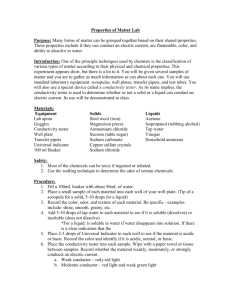
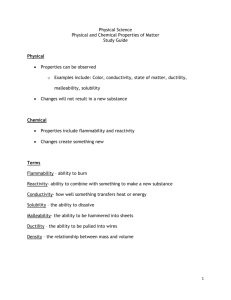
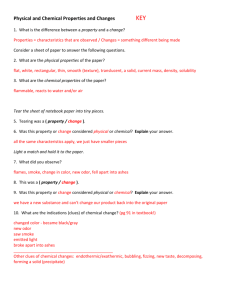


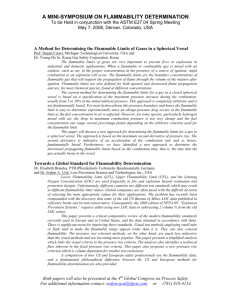
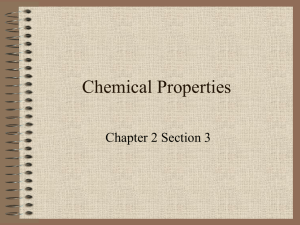
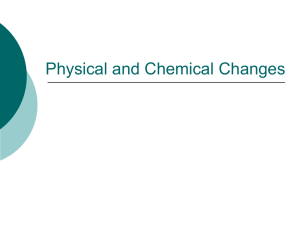
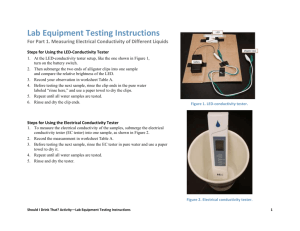
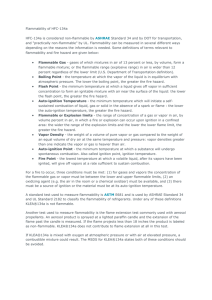
![[Download MSDS] (.doc)](http://s3.studylib.net/store/data/006712111_1-6d2aee48fdad537db5a64f921a9ed630-300x300.png)


